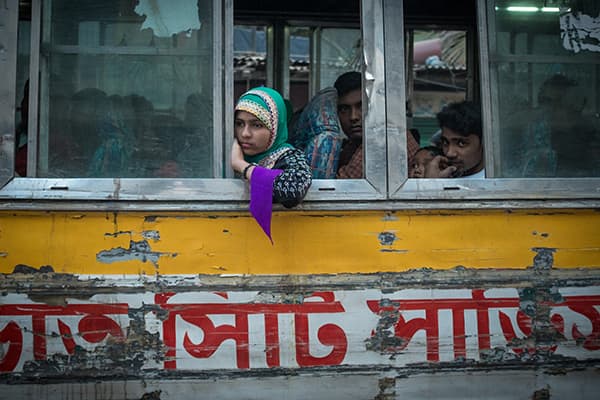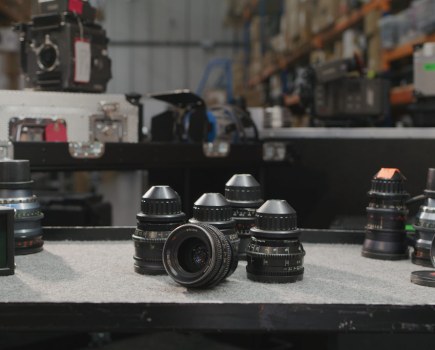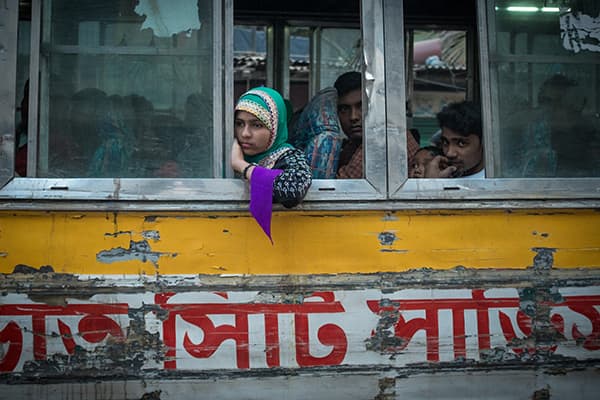
A girl caught in deep thought on a bus in Dhaka, Bangladesh
I am a travelling photographer who carries two full-frame Canon bodies and a selection of prime lenses for my work, whether it be photojournalism, travel or commercial. I used to say I would not feel confident shooting on a small camera because of the loss of depth of field control and the lack of a viewfinder. However, times have changed (as has my back) and compact cameras are becoming more appealing.
Recently, I have been spending months at a time on the road. Bearing the weight of my kit can be exhausting, causing me to leave it behind at my accommodation when I go on routine walks for dinner or out to buy something. Of course, it is always during these times that I miss some random moment on the street, wishing I could have captured it on camera. I am sure most photographers are familiar with this. You might be on a routine errand, grabbing dinner or having a coffee, but amazing moments happen all the time, not just when you’re carrying your camera.
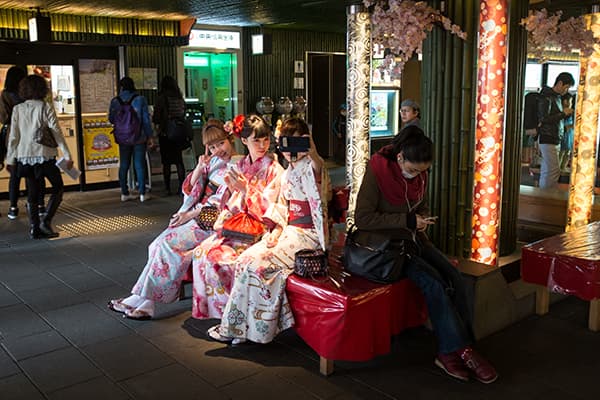
Girls dressed in kimonos take a selfie at Arashiyama train station near Kyoto, Japan
In some places the presence of my DSLR has been almost offensive to locals, especially in tourist hotspots. At Larung Gar Buddhist Academy in Sichuan, China, the nuns and monks are so tired of being photographed by tourists that they can almost smell a DSLR. Requests to take a photo are often met with a harsh rejection. I do not wish people to feel awkward when I take photographs, so I barely took any during my time there.
However, I believe photographers have a responsibility to document scenes of life, so for candid scenes I never feel guilty. After all, in years to come, an image may be the only trace of what a place or culture was. At Larung Gar, even doing this was incredibly difficult with my DSLR.

Boys hang out in a train station near Sylhet, Bangladesh
Later, as an alternative to my bulky professional camera, I began to think of upgrading my cheap Android smartphone to an iPhone 6s and using it as my handy, take-anywhere camera. I soon decided against this idea, as I tend to be rough on my mobile phones and have come to enjoy having a cheap phone I can be careless with, without feeling guilty.
That said, the images from each generation of smartphone are getting better and better, and many photographers are using theirs to produce work that is actually being published.
Instead, what I wanted was something with a viewfinder and serious depth of field, so I started thinking about investing in what I call a ‘sidekick’ camera: something light, sleek, powerful and discreet that I could take with me all the time.
Travelling light
I went to Bangladesh recently on a mission to capture the essence of the country, as well as to produce interesting documentary stories. It’s a congested, colourful, chaotic and utterly photogenic place. I usually shoot a lot of portraits as well as candid street scenes, so I wanted a camera that could do just that.
Before I left for the country, I picked up a used Fujifilm X100S – my sidekick camera. I was a little worried about its fixed focal length, but this aspect of the camera gradually became its greatest asset. The X100 series cameras are magical little things that, with their fixed focal length, force you to be a moving photographer, and in Bangladesh I took full advantage of this.
The discreet camera
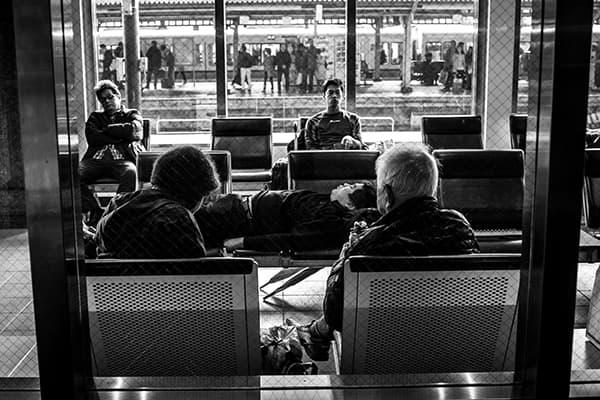
Passengers rest in a waiting room at Kyoto train station
Compacts such as the X100S truly give you the stealth and speed you need to capture candid scenes easily. Sometimes I can be feet away from one, shooting away, and people pay me no attention. Unlike a DSLR, a compact doesn’t make you look like a professional working for some news agency.
In Taiwan, where I live, people are extremely camera shy and prone to putting up a peace sign, or for them, a V-for-victory sign with their fingers when they notice a camera. There have been umpteen times a good street shot has been ruined by those two fingers.
In January, for an editorial assignment, I had the challenge of capturing the recent Taiwanese presidential election. I wanted to capture candid moments, unposed, without the V-for-victory fingers. My compact allowed me to capture some great candid moments, particularly the reactions and emotions of Taiwanese voters as they witnessed the election of their first female president.
Without doubt, discretion is my compact sidekick’s biggest advantage over a DSLR. For photojournalists, as well as travel and street photographers, a compact such as my Fujifilm X100S can record those candid moments no DSLR ever could.
Light and quick

The Fujifilm X100S is Paul Ratje’s ‘sidekick’ camera – excellent for candid street shots
Sometimes, because it is so light, I almost forget I am carrying my X100S. Like most mirrorless cameras it’s lighter than Canon or Nikon DSLRs, which is why many professionals have made the switch. Their lightness relieves sensitive backs crippled by years spent lugging DSLRs, while helping you to move faster for that vital shot.
Owing to its size, the compact sidekick comes into its own on days spent travelling on work. I don’t want to take my DSLR out of its safe place when I am on the train because I am worried about losing something or having it stolen. Instead, I just hang my compact sidekick around my neck, with it not really being too obtrusive. It’s not as if a compact is inferior to a DSLR, either. The images from the X100 series are on a par with the image quality of most APS-C DSLRs.
Unobtrusive style
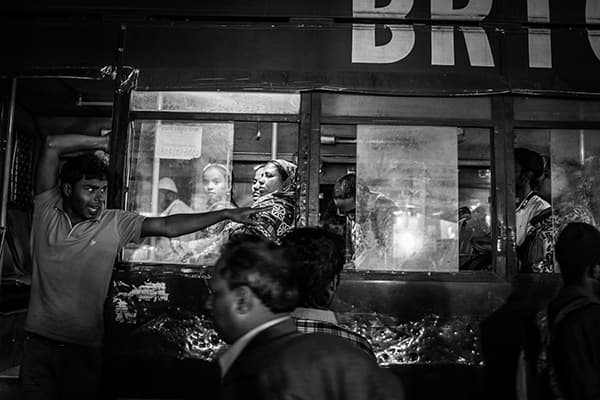
On the streets of Dhaka, Bangladesh
Compacts like the Fujifilm X100 series, or mirrorless models such as the Olympus Pen and OM-D series almost have a Leica-vintage feel. You don’t look like a paparazzo. Instead, you look like someone in the crowd when holding such a camera – invisible even. I can easily slip my X100S under my jacket if I don’t want people to see it, while my DSLRs feel like an M16 rifle and all eyes are on me.
The downsides
Compacts certainly have their limitations, though. I couldn’t do a wedding shoot or photograph sports with a compact. If you are a professional photographer or avid hobbyist, you need a variety of focal lengths to shoot with, and probably a full-frame sensor.
The Sony A7 series is enticing, but making the switch is expensive. Adapters for Nikon and Canon lenses make the A7 almost as heavy as a DSLR, and right now, I don’t think I would trade Sony’s lens line-up for what Canon and Nikon have. However, prices on the Sony E-mount lenses will eventually drop, and second-hand examples are sure to surface on eBay.
For my work as a documentary photojournalist, I could get away with using my Fujifilm X100S for many shoots, but not all. When I’m under pressure to get a job done, I prefer the control my DSLRs give me. If I am shooting a wedding, I am much more comfortable with the control I get from my Canon EOS 6D, not to mention its long battery life and all of the lenses I am accustomed to shooting with.
A big help
A compact can help you get the shots you have been missing when you don’t want to have that heavy DSLR around your neck. Whether at night, on random errands or while in transit, it will take the load off your back, while keeping you creative. It has changed my photography immensely and using my X100S, I now look forward to my leisure photography. However, whatever camera you choose, always keep shooting and pushing for different images, and remember, your eyes will always be your best teachers.
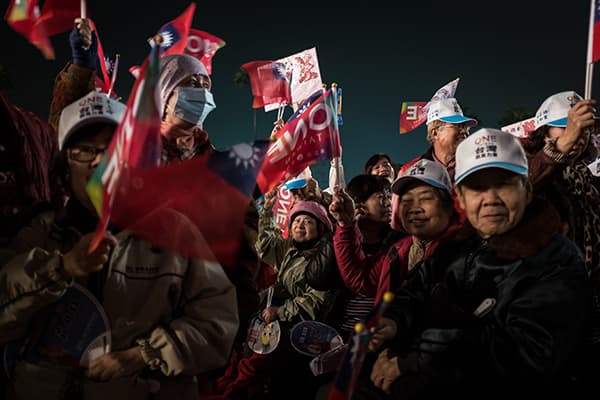
Supporters cheer at a campaign rally in Kaohsiung, Taiwan
About Paul Ratje
Paul Ratje studied at New Mexico State University and earned a bachelor’s degree in photojournalism and foreign languages. His passion for photography and love for languages means he is currently based in Taiwan where great photos, inspiration, as well as an outlet to practice his Mandarin, are right on his doorstep. Visit paulratje.photoshelter.com

